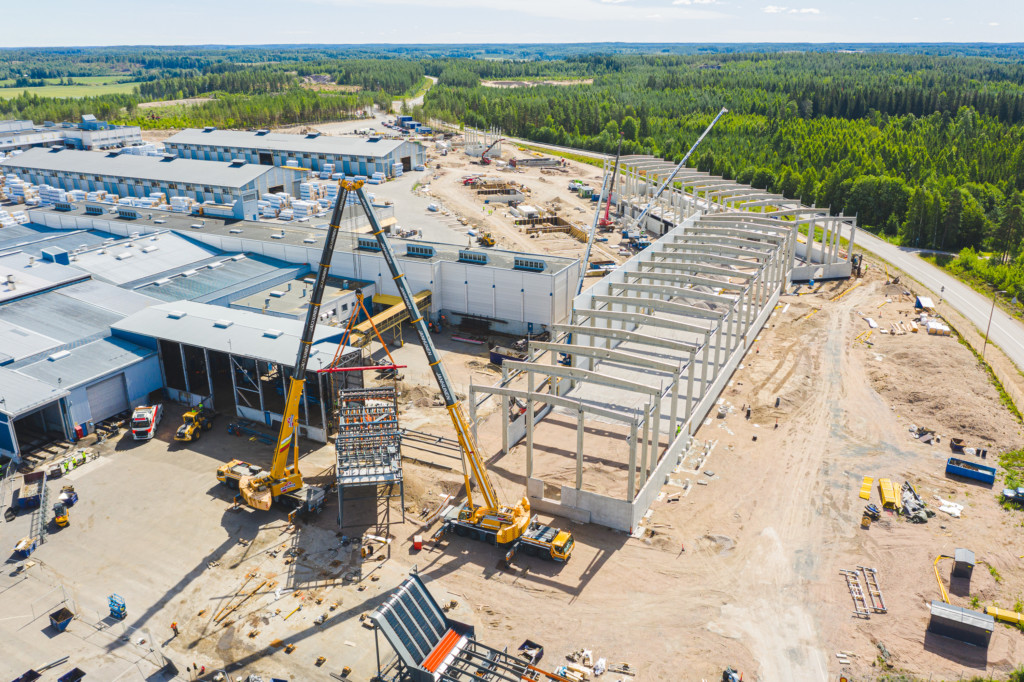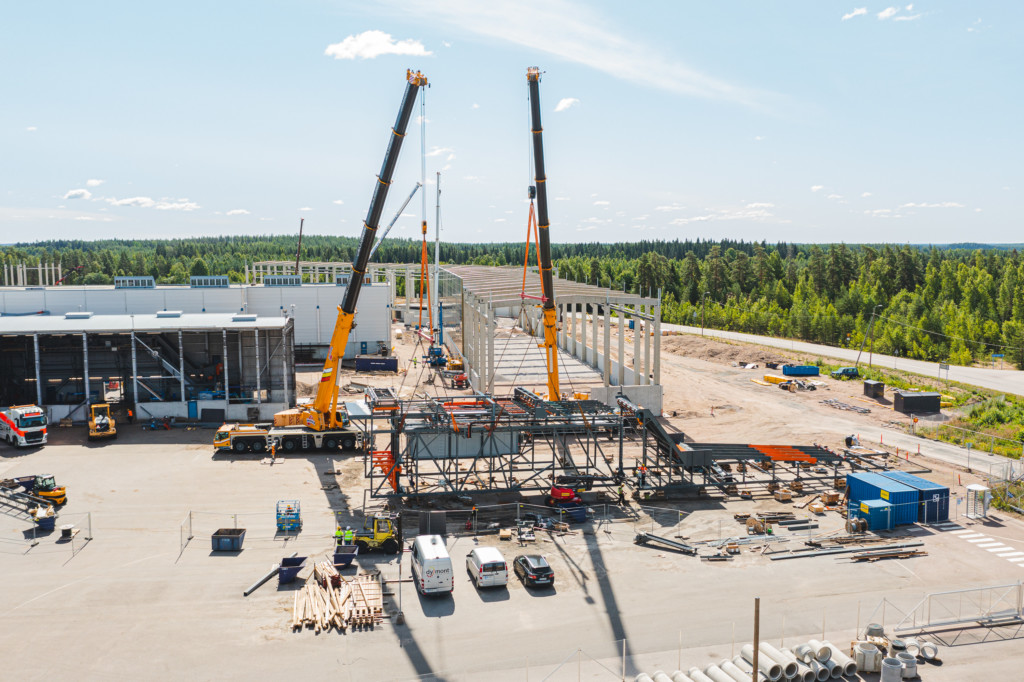Sometimes even a solution that seems a bit unusual can prove to be effective. A case in point is the construction site of Koskisen’s new sawmill, where the old stick-stacking machine made way for a new one in July.
Construction at Koskisen’s Tarhanmäki site has been brisk throughout the summer. Besides the yard area, the sawmill building itself, including the equipment foundations, is proceeding on schedule, and while there have been some delays, they have been resolved without a hitch by changing the order of the work.
“When the war started, suppliers warned of possible delays, but they have not materialised. Materials have been available as usual,” says the head of the project, Lassi Santala of Koskisen.
The work has also gone according to plan on a practical level. Despite the high number of machines on the construction site and the different operators from different work cultures, Santala says occupational safety has been top-notch. There has not been a single work accident leading to sick leave, only a few close calls causing nothing more than a startle.
“Ensuring occupational safety is a high priority in the project. Safety is monitored closely at the worksite and is part of every workday,” Santala stresses.

Out with the old, in with the new
The first new machine was installed during the summer shutdown period, when the Tarhanmäki stick-stacking plant that was built in 1996 was updated with both new machinery and software. In order to ensure continuous production, the 45-metre-long stick-stacking line delivered by Renholm was initially built outside, next to the hall, and then moved indoors when the shutdown period started.
“The wall on one side of the hall was opened up, the old stick-stacking line was dismantled and a new one was hauled in. It took over five days to dismantle and move the equipment, after which we could begin the electrical work and secure and equip the new facility. The line was ready to go when the shutdown ended,” recounts Santala.
The new line is 40 per cent more efficient than the old one, which means it is also longer. This required foundation work also at the front end of the stick-stacking line before the line could be installed. The line is now in the ramp-up phase and is already running in three shifts. In addition to speed, the line was improved also in terms of disturbances, as, thanks to the machine vision system, broken or damaged drying sticks are automatically removed and thus do not cause problems in the stick-stacking process.
Until now, the stick-stacking line has been fed from outside, but once the line is integrated with the new sawmilling line, sawn timber will make its way from dimension sorting to stick-stacking all under the same roof. Until the dimensioning plant’s access point is ready, however, the stick-stacking line will continue to be fed from outside.
“The external feed option will also remain in use when the new sawmill is completed. This will allow us to feed batches that need to be dried again directly to the sticker-stacker if necessary,” explains Santala.
